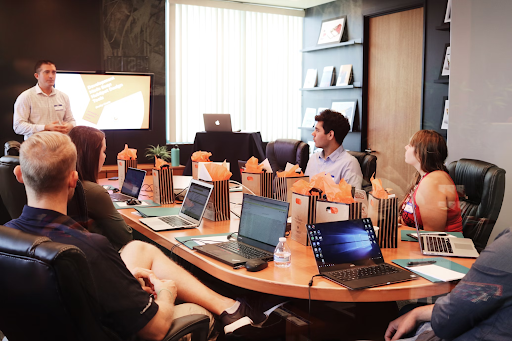
What is skill fade and how to combat it?
Even though every business tries to teach employees to the best of its abilities, a fair amount of knowledge will be lost over time. From teaching techniques and individual ability to methods of testing and evaluation criteria, there are various reasons why ‘skill fade’ happens. However, the majority of these causes can be rectified with the right approach.
What is skill fade?
There have been various studies and lots of research into the subject of skill fade, however it can be defined as the decay of ability or adeptness over a period of non-use. However, a lot will depend on the type and nature of the individual’s expertise or competence.
For example, if you haven’t ridden a bike for a number of years, you’ll still be able to get on and not fall off with relative ease. This kind of skill is like an automatic or natural tendency that is hard to forget and lose.
Conversely, it is much easier to forget how to complete tasks or activities that are more complicated and less predictable. At school, you might have been able to explain Pythagoras’ theorem in great detail. But seeing as you haven’t needed to recite this piece of information for quite a while, that knowledge could easily be lost.
In the world of work, there could be certain skills or pieces of information you taught employees early on in their careers. But if you were to ask them to perform or regurgitate what was taught, there is every chance they won’t be able to. Therefore, it is necessary to look at how and why skill fade happens.
Factors affecting skill fade
Retention interval - The biggest and most widely accepted reason for failing to remember certain information is the interval between retention. Essentially, the longer the period of non-use, the greater the probability of decay.
Overlearning - Often said to be the single most important factor in knowledge retention, overlearning refers to the amount of extra training beyond the point needed to reach competency. The reason why this is a potential problem is because overlearning can induce complacency and increase the association between stimulus and response. On top of that, by identifying the perfect way to perform a task or duty through too much training, employees can get stressed or anxious that only the very best will suffice.
Task type - Whether it is physical, cognitive, open-loop, closed-loop, natural or artificial, the type of task also makes a big difference. Some people are more capable of performing duties that require physical strength or an exertion of forces, while others excel at problem solving and decision-making. In terms of skill fade, cognitive tasks can be rehearsed easier than physical ones. Duties that have no beginning or end and a specific context are better retained than those with no conclusion or frame of reference.
Conditions of retrieval - Retention is also dependent on the conditions and environment of training. If this is vastly different to the real-life scenario, skill retention will suffer. However, if the test and learning setting is similar to the workplace and the employee has cues to draw upon, they will perform a lot stronger.
Methods for training, testing and evaluation - The type of training and testing methods used also affects knowledge retention. Practical tuition or on-the-job training might lead to better retention in some job roles compared to lectures and classroom teaching for others. Furthermore, the majority of retention tests take place after teaching has taken place at a later date. By this time, retention interval becomes an issue again. While evaluation criteria such as reactions, learning, behaviour and results do not affect skill fade, it is an important consideration as this is how knowledge retention is measured.
Individual ability - It is no real surprise that individuals with higher abilities show less skill fade than their less able peers. This is usually because lower ability learners forget larger chunks of abstract and theoretical material easier than others.
How to combat skill fade
Having looked at all the aspects of skill fade, there are various steps a business can take to ensure their employees retain and recite valuable information. A lot will come down to the recruitment process, but the overriding issue with skill fade is training. Therefore, a balanced and systematic approach to teaching or tuition is required.
To deal with the biggest issue of retention interval, it is clear that employees need to be continually asked about subjects or topics they’ve previously learnt about. However, a training program based on advanced learning and speed retention can also address methods for training, testing and evaluation too. Here at Wranx, we aim to fight and irradiate skill fade by exploiting the psychological spacing effect, which refers to the way we easily remember or learn items when they are studied a few times over a long period of time.
Our Wranx Drills ask employees a series of 10 questions per day about certain topics or themes. After the respondent rates how well they knew an answer, we schedule and prioritise questions based on ability. Unfamiliar topics are given precedent but once these are gradually understood over time, they will become imbedded into the individual’s long-term memory. As for the issue of overlearning, subjects or questions that are comprehensively understood won’t be asked again until an appropriate time arises.
When it comes to conditions of retrieval, our multi-device solution enables any business to implement training wherever and whenever they want. Available on smartphone, tablet and desktop, Wranx’s training solution enables employees to learn new skills in the same environment where they’ll be applied. And to ensure skill fade isn’t becoming an issue, our deep dive reporting provides in-depth statistics and analysis into each employee’s progress.
Even though skill fade might be a frustrating and annoying thing to deal with, there are a few straightforward and simple things you can do to ensure it does not become an issue for your workforce or business.


